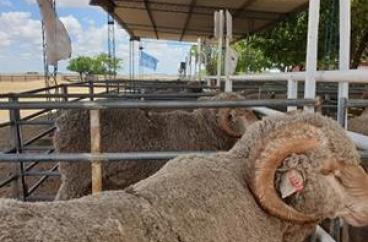Instituto Nacional de Investigación Agropecuaria
INIA CERTEC.Agro: evaluación de tecnologías con el aporte de usuarios calificados.

El Proceso de Certificación de Tecnologías INIA completó su cuarta edición y se consolida como una herramienta valiosa para la evaluación de los productos tecnológicos previo a su difusión masiva, con la participación colaborativa de referentes externos al Instituto y orientada al agregado de valor de las tecnologías.
INIA CERTEC.Agro:evaluación de tecnologías con el aporte de usuarios calificados.

El Proceso de Certificación de Tecnologías INIA completó su cuarta edición y se consolida como una herramienta valiosa para la evaluación de los productos tecnológicos previo a su difusión masiva, con la participación colaborativa de referentes externos al Instituto y orientada al agregado de valor de las tecnologías.
Principales avances de la Comisión y Comité de Género de INIA.

En el marco de los compromisos asumidos por INIA con el Plan Nacional de Género en las Políticas Agropecuarias del Ministerio de Ganadería, Agricultura y Pesca, en este artículo se presentan las acciones más recientes en la temática equidad de género.
Escuelas de diferentes zonas del Uruguay recibieron el nuevo libro infantil de INIA.

El nuevo libro infantil del Instituto Nacional de Investigación Agropecuaria (INIA), "Los arrocitos investigadores. Tras la pista de las ovejas perdidas", llegó a múltiples centros educativos del Uruguay en el marco de diferentes acciones que ha llevado a cabo la institución para acercar el material a su principal destinatario.
Crece la investigación en inocuidad y calidad nutricional de los alimentos y su vínculo con la salud humana.

INIA promueve la investigación en inocuidad y calidad nutricional de los alimentos provenientes del agro, motivando a la participación de diversos actores mediante un exitoso llamado a propuestas de proyectos sobre agroalimentos.
El complejo oleaginoso en Uruguay en la zafra 2022/2023 y sus perspectivas.

Luego de una zafra marcada por las condiciones hídricas para el desarrollo de los cultivos, este artículo pone énfasis en el impacto de los magros resultados productivos sobre la economía del país, en particular el aporte del complejo oleaginoso al valor agregado y sus transferencias.
Genética para una ganadería sustentable. De la cría al consumidor final. [INIA Dirección Nacional]

El pasado 27 de noviembre en el Auditorio LATU, se llevó a cabo una nueva edición de la ya tradicional jornada que organizan cada año en conjunto INIA y la Sociedad de Criadores de Hereford del Uruguay (SCHU). Presentaciones de la jornada:http://www.inia.uy/investigación-e-innovación/unidades/Unidad-de-Comunicacion-y-Transferencia-de-Tecnologia/Genetica-para-una-ganaderia-sustentable---Edicion-2023 .......................... Filmaciones en el canal INIA Uruguay - YouTube:https://www.youtube.com/playlist?list=PLf9-OIq8VjYOUjfnpg7haI5IiEGHD0pqe
Revista INIA Uruguay. (N° 75, Diciembre 2023).

CONTENIDO:INIA POR DENTRO:INIA CERTEC. Agro:evaluación de tecnologías con el aporte de usuarios calificados. -- Principales avances de la comisión y comité de género de INIA. -- Escuelas de diferentes zonas del Uruguay recibieron el nuevo libro infantil de INIA. -- PRODUCCIÓN ANIMAL:Dinámica de la respuesta a la suplementación invernal de bovinos en crecimiento sobre campo natural. -- Herramientas para la detección de Mycobacterium avium subsp. paratuberculosis. -- Monitoreo de enfermedades monogénicas asociadas con baja eficiencia reproductiva en ganado bovino lechero.
Paginación
- Página anterior
- Página 16
- Siguiente página

